Portable lodge from the fifth century BCE: a study of the tent of the Marquis Yi of Zeng
-
Changping Zhang
Abstract
A set of bronze parts, excavated in a funeral pit next to the tomb of Marquis Yi of Zeng (Hubei, China), is recently restored to its rightful shape, a hip-roof tent from the fifth century BCE. Measured 10m long and built with 127 wooden poles and 338 bronze parts, it is considered to be the largest and the most complicated tent in pre-imperial China, which is portable, easy to assemble, disassemble, and manufactured in an engineering design context.
Postscript
Research on the engineering of the tent and related three-dimensional modeling were carried out by Wuhan Digital Culture Technology Co., Ltd. The authors also wish to thank Professor Jessica Rawson for reading the paper and offering insightful suggestions.
Appendix table Supplementary material
| Category | Bronze fitting | Image | Excavated quantity | Estimated quantity in reconstruction |
|---|---|---|---|---|
| Three-way join | 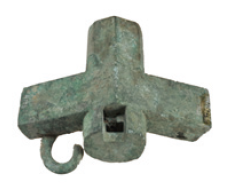 |
2 | 2 | |
| Four-way join |  |
2 | 2 | |
| Twisting end (a) |  |
2 | 4 | |
| Twisting end (b) |  |
28 | 30 | |
| Sleeve-related fittings×279 | Key rafter upper end (a) |  |
2 | 2 |
| Key rafter upper end (b) |  |
4 | 4 | |
| Ridge end |  |
6 | 6 | |
| Brace end |  |
7 | 8 | |
| Hip jack upper end |  |
47 | 48 | |
| Lower rafter and end hip for jack common |  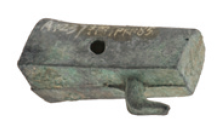 |
77 | 78 | |
| Key rafter lower end | 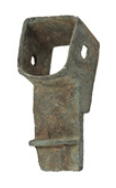 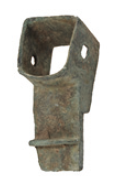 |
10 | 10 | |
| Side fitting | 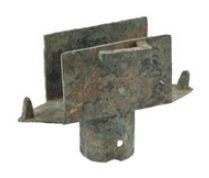  |
10 | 10 | |
| Sleeve-related | Corner fitting | 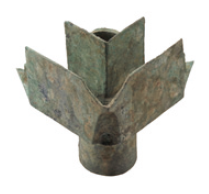 |
2 | 4 |
| fittings×279 | Key rafter middle part | 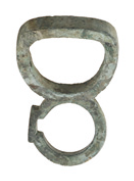 |
8 | 8 |
| Hip rafter middle part | 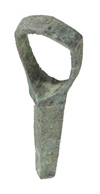 |
4 | 4 | |
| Common rafter middle part (a) |  |
34 | ||
| Common rafter middle part (b) | 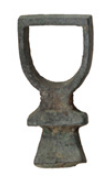 |
34 | 78 | |
| Ring-shaped fitting |  |
28 | 30 | |
| Hook-related | Hook (a) |  |
31 | ? |
| fittings×80 | Hook (b) | 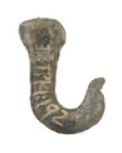 |
18 | ? |
| Hook (c) |  |
3 | ? | |
| Shovel-related | Shovel lower end |  |
18 | 18 |
| fittings×32 | Shovel upper end |  |
14 | 18 |
| Unclassifiable fitting×1 | ? |  |
1 | ? |
Note:
1. The excavated quantity of the bronze fittings is based on the published data in WHU School of History et al. 2017.
2. The estimated quantity of the bronze fittings is based on the published data in Zhang 2019.
3. The bronze fittings listed are only those who involved in the reconstruction process of Marquis Yi’s tent. Other 75 fittings in seven types, including 34 bronze rivets, are not listed.
References
Binford L. 1993. Bones for stones, considerations of analogues for features found on the central Russian Plain. In O. Soffer, and N. Dmitrievich (ed.), From Kostenki to Clovis, Upper Palaeolithic–Paleo-Indian adaptations. New York: Plenum Publishing, pp. 101–124.10.1007/978-1-4899-1112-4_8Search in Google Scholar
Bishop, M., and J. Coulston. 2006. Roman military equipment from the Punic Wars to the fall of Rome. Oxford: Oxbow.10.2307/j.ctvh1dtw2Search in Google Scholar
Driel-Murray, C. 2017. Warm and dry: a complete Roman tent from Vindolanda. Leather in warfare. Leeds: Royal Armouries Museum. (Open access source: http://hdl.handle.net/1887/57787).Search in Google Scholar
Hawkes, J. H. 1993. The atlas of early man. New York: St. Martin’s Press.Search in Google Scholar
Hebei Provincial Institute of Cultural Heritage 河北省文物研究所. 1996. Zhanguo Zhongshan guo guowang zhi mu 战国中山国国王之墓 (Warring States tomb of the King of Zhongshan state). Beijing: Wenwu chubanshe.Search in Google Scholar
Hubei Provincial Museum 湖北省博物馆. 1989. Zenghou Yi mu 曾侯乙墓 (The tomb of Marquis Yi of Zeng). Beijing: Wenwu chubanshe.Search in Google Scholar
Institute of Archaeology, CASS 中国社会科学院考古研究所, and Hebei Provincial Office for Cultural Heritage 河北省文物管理处. 1980. Mancheng Han mu fajue baogao 满城汉墓发掘报告 (Excavation report of the Mancheng Han tomb). Beijing: Wenwu chubanshe.Search in Google Scholar
Institute of Archaeology, CAS 中国科学院考古研究所. 1956. Huixian fajue baogao 辉县发掘报告 (Excavation report of Huixian County). Beijing: Kexue chubanshe.Search in Google Scholar
Pope, J. et al. 1967. The Freer Chinese bronzes Volume I catalogue (first edition). Washington: Smithsonian Institution Bureau of American Ethnology.Search in Google Scholar
Shandong Museum 山东省博物馆 et al. 1980. 山东长清岗辛战国墓 (Warring States tomb in Gangxin, Changqing, Shandong Province). Kaogu 考古 (Archaeology) 4:325–332.Search in Google Scholar
Shanxi Provincial Institute of Archaeology 山西省考古研究所 and Taiyuan Cultural Heritage Management Committee 太原市文物管理委员会. 1996. Taiyuan Jinguo Zhaoqing mu 太原晋国赵卿墓 (The tomb of Minister Zhao of the Jin state in Taiyuan). Beijing: Wenwu chubanshe.Search in Google Scholar
Sichuan Provincial Museum 四川省博物馆. 1976. 成都百花潭中学十号墓发掘记 (Excavation of tomb M10 in Baihuatan Middle School, Chengdu). Wenwu 文物 (Cultural relics) 3:41–46.Search in Google Scholar
WHU School of History 武汉大学历史学院 et al. 2017. 湖北随州市曾侯乙墓一号陪葬坑发掘简报 (Excavation report of pit K1 of the Marquis Yi’s tomb in Suizhou, Hubei). Kaogu 考古 (Archaeology) 11:31–44.Search in Google Scholar
Zhang, Changping 张昌平. 2019. 曾侯乙墓一号陪葬坑帷帐复原研究 (A reconstruction study of the tent from pit K1 of the Marquis Yi’s tomb). Kaogu 考古 (Archaeology) 4:98–110.Search in Google Scholar
© 2022 Walter De Gruyter GmbH, Berlin/Boston
Articles in the same Issue
- Frontmatter
- New archaeological discoveries
- The Excavation of a Neolithic site at Jingtoushan in Yuyao, Zhejiang
- The Neolithic Shuanghuaishu site in Gongyi, Henan
- The Shang dynasty remains at the Guoyuanzui site in Lutai Mountain, Huangpi District, Wuhan
- The Western Zhou Yaoheyuan site in Pengyang County, Ningxia
- Tang remains from the Keyak Khduk Beacon site in Yuli County, Xinjiang
- The excavation of the 2018 Xuewei tomb No. 1 in Reshui cemetery, Dulan County, Qinghai
- Reports
- The 2016–2017 excavation of the bronze foundry zone at the Guanzhuang site, Xingyang, Henan
- The excavation of tomb M12 at Hujiacaochang cemetery in Jingzhou, Hubei
- The excavation of Liao dynasty tomb of Han Derang in Beizhen, Liaoning
- Research
- Research on prehistoric 凸-shaped house remains on the Loess Plateau
- The rise and fall of the Liangzhu society in the perspective of subsistence economy
- Boot-shaped antler artifacts and prehistoric leather production
- Archaeological culture, document texts, and the construction of early Wu Yue history
- Portable lodge from the fifth century BCE: a study of the tent of the Marquis Yi of Zeng
- Additional niches and architecture added in the Tang dynasty to the Vairocana niche in the Fengxian Temple at Longmen
- Stable carbon and nitrogen isotope analyses of human and animal skeletal remains unearthed at Zengpiyan and Dayan sites in Guilin
Articles in the same Issue
- Frontmatter
- New archaeological discoveries
- The Excavation of a Neolithic site at Jingtoushan in Yuyao, Zhejiang
- The Neolithic Shuanghuaishu site in Gongyi, Henan
- The Shang dynasty remains at the Guoyuanzui site in Lutai Mountain, Huangpi District, Wuhan
- The Western Zhou Yaoheyuan site in Pengyang County, Ningxia
- Tang remains from the Keyak Khduk Beacon site in Yuli County, Xinjiang
- The excavation of the 2018 Xuewei tomb No. 1 in Reshui cemetery, Dulan County, Qinghai
- Reports
- The 2016–2017 excavation of the bronze foundry zone at the Guanzhuang site, Xingyang, Henan
- The excavation of tomb M12 at Hujiacaochang cemetery in Jingzhou, Hubei
- The excavation of Liao dynasty tomb of Han Derang in Beizhen, Liaoning
- Research
- Research on prehistoric 凸-shaped house remains on the Loess Plateau
- The rise and fall of the Liangzhu society in the perspective of subsistence economy
- Boot-shaped antler artifacts and prehistoric leather production
- Archaeological culture, document texts, and the construction of early Wu Yue history
- Portable lodge from the fifth century BCE: a study of the tent of the Marquis Yi of Zeng
- Additional niches and architecture added in the Tang dynasty to the Vairocana niche in the Fengxian Temple at Longmen
- Stable carbon and nitrogen isotope analyses of human and animal skeletal remains unearthed at Zengpiyan and Dayan sites in Guilin

